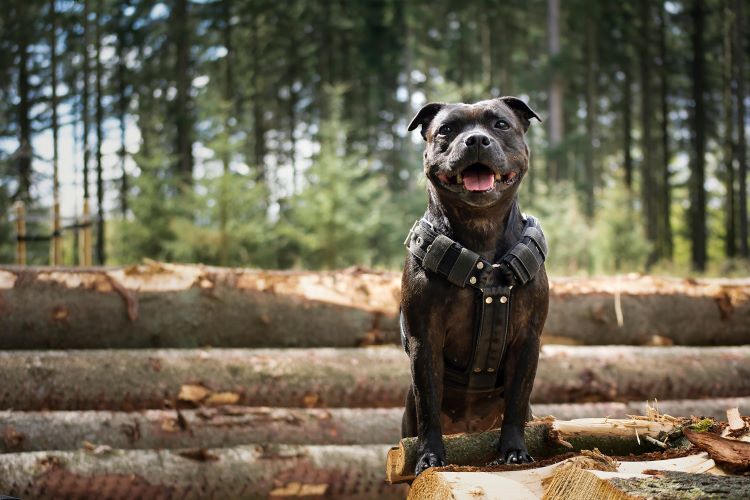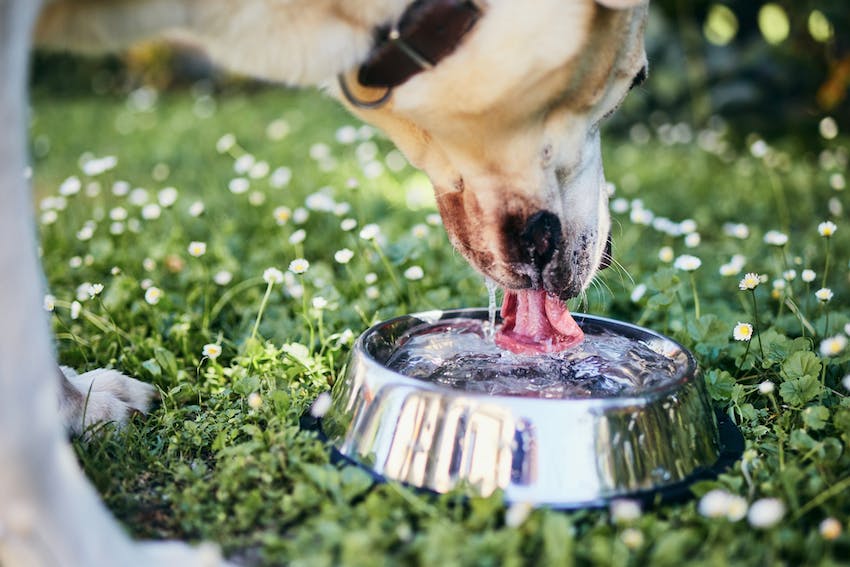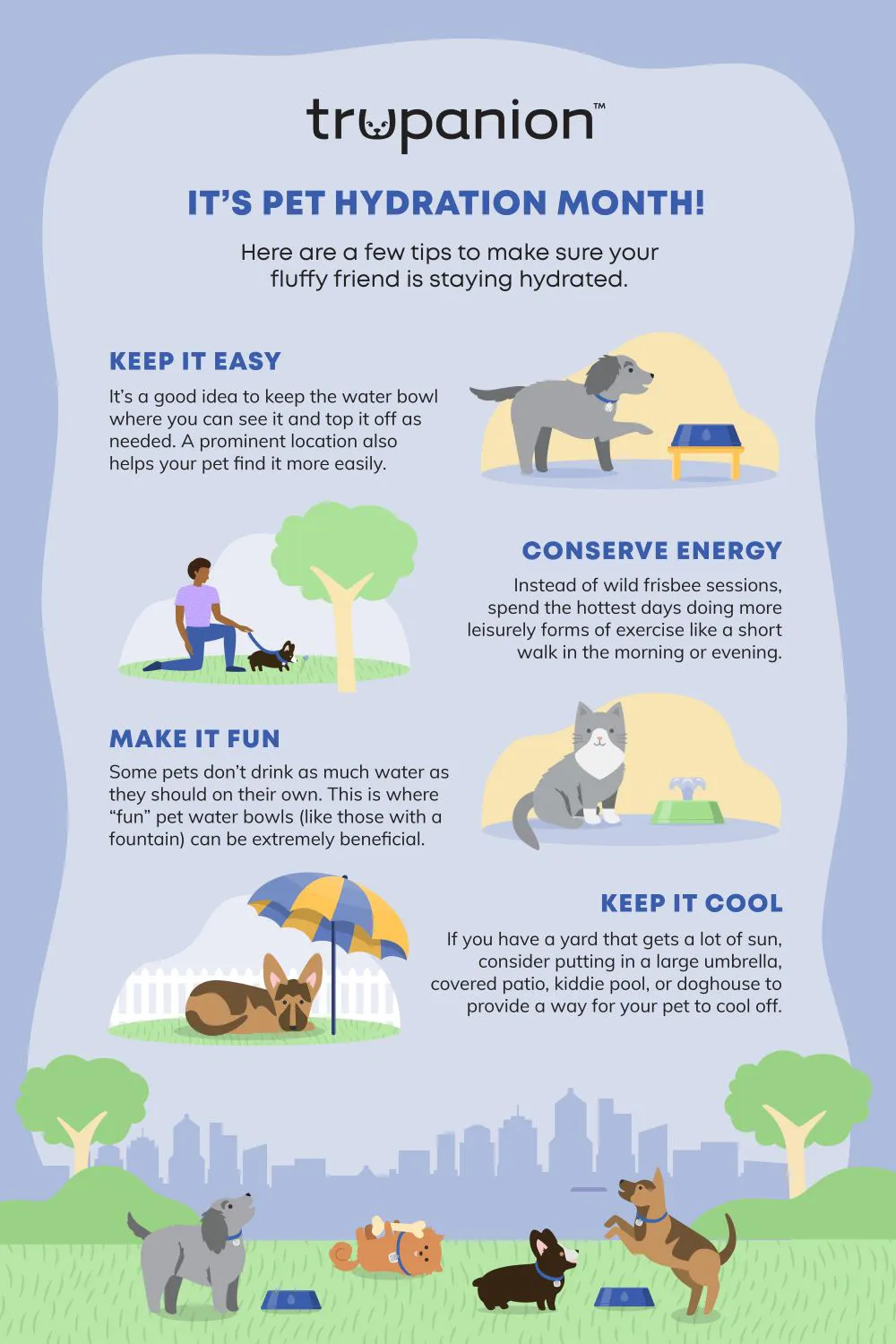Ready to help treat your pet to a healthy life?
Dog Dehydration Treatment & Prevention
By : Kelli Rascoe & Trupanion Staff | Updated Jul 1, 2025

The bright days and warmth of summer bring a lot of new activity opportunities for you and your dog, but while you're planning vacations, hiking trips, or even just daily walks, don't forget about your dog's water intake. Canine dehydration is a real and serious issue year-round, but especially during the summer season. No matter what you're up to during these warmer months, it's crucial to know how to recognize signs of dehydration in dogs and what to do. This preventable condition can be fatal if not addressed quickly, so having a good grasp on both prevention and treatment is a must for every dog owner.
6 quick facts about dog dehydration
- July is Pet Hydration Month, the perfect time to learn about how to keep your dog properly hydrated and prevent disaster.
- Dog dehydration can range from mild to severe, though mild forms can quickly progress to severe conditions when left untreated. Severe dehydration can be fatal.
- A dog's body consists of around 70% water. Dehydration occurs when this balance becomes disrupted and a dog is losing more water than they are taking in.
- Canine dehydration can be tough to detect when only at 5% or less, but at 15% or more, a dog's condition can deteriorate rapidly and become difficult to treat.
- Treatment can be costly! According to Trupanion pet insurance claims data, the average eligible cost for dehydration in dogs is $380 but has reached over $9,000 for a single pet.*
- Heatstroke, which can correspond with dehydration in dogs, is often even more expensive to treat. Trupanion claims data shows the average eligible cost for heatstroke in dogs is $1,386, though the highest payment ever made for a single pet was over $15,000.*
*Based on Trupanion claims data from December 2013 through December 2024.
How dogs become dehydrated
Dehydration in dogs is the direct result of your pet not retaining enough water in their system. It may occur after a pet is outside in the sun in hot weather, but that's far from the only time when it can happen. Dehydration is caused by either the lack of food or water or even water loss occurring after an illness or injury. If your pet is vomiting or has diarrhea and cannot retain fluids, they could also become dehydrated.
Signs of dehydration in dogs
If you are worried your pet may be experiencing dehydration, keep an eye out for the following signs.
- Lethargy
- Excessive panting
- Sunken eyes
- Dry mouth
- Skin loses elasticity
- Weakness
- Delayed capillary refill time (veterinarians will check the gums to check on a dog’s oxygen level)
- Gagging or vomiting
- Passing out (in severe cases — seek emergency medical care immediately)
While mild dehydration may be able to be effectively treated just by giving your dog water, it's a good idea not to take chances. This is why you should contact your veterinarian if you notice any of the above signs, especially if your dog appears weak or is experiencing any gastrointestinal issues.

Treating dog dehydration
If your pet is showing signs of being dehydrated, it's time to act quickly. First and foremost, provide clean, fresh water and allow them to drink, but in small, supervised amounts. A dehydrated pet suddenly guzzling down water can lead to vomiting and result in additional loss of fluids.
Treating severe dehydration in dogs requires immediate veterinary intervention. Treatment may include intravenous fluids to rapidly restore hydration and balance electrolytes. In addition to fluids, your veterinarian may address related conditions such as gastrointestinal illness or heatstroke. Continuous monitoring is essential to ensure recovery and prevent recurrence. Prompt, professional treatment is critical to saving a severely dehydrated dog's life.
Naturally, depending on your pet’s age, weight, or breed, it may be hard to know how much water they should be drinking.
What to include in your pet first aid kit
It’s always best when traveling with pets to be prepared for the unknown. By having a pet first aid kit or pet emergency bag handy, you can have everything you need should something happen to your pets.
Additional items to include in your emergency travel kits:
- Portable water bowl or pet water bottle
- Ice bags
- Cooling vest
- Hydration pack
Naturally, the more water you have the better, and make sure it’s accessible at all times. Also, keep pets cool in the shade, shorten playtime in the sun, take breaks, and enjoy some rest and relaxation inside in the air-conditioning. Learn more about summer safety tips for pets.
July is Pet Hydration Month
Did you know that July is Pet Hydration Month in North America? That's right! This month seeks to raise awareness about the importance of proper hydration not just for dogs, but for all pets.

As temperatures soar during these peak summer weeks, the risk of dehydration in pets increases, making it essential for pet owners to understand the signs and prevention strategies. Throughout Pet Hydration Month, veterinarians and animal welfare organizations alike highlight the importance of proper hydration, especially for active pets and those with underlying health conditions. You can participate by volunteering with a local organization, spreading awareness among your fellow pet owners, and of course staying on top of your own pet's water intake. Together, we can ensure our furry friends stay hydrated, healthy, and happy all year round.
